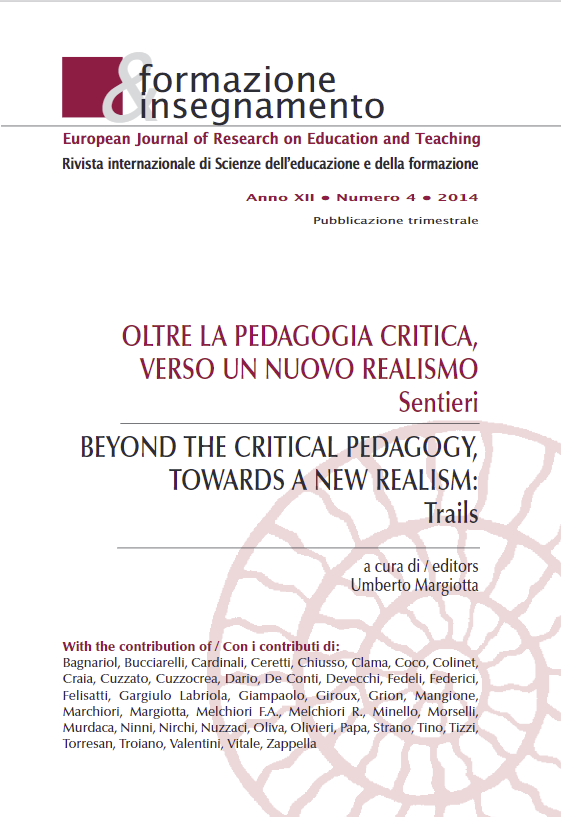Mente, cervello, educazione: la “forza” dinamica dell’intelligenza
Abstract
Sviluppare obiettivi d’apprendimento che riflettano l’idea che l’intelligenza sia costituita da un repertorio espandibile di abilità e che quindi sia possibile, attraverso gli sforzi personali, farla aumentare in modo incrementale, è l’imperativo pedagogico del XXI secolo.
L’intelligenza o “comportamento adattivo” è infatti connessa alla modificabilità e alla plasticità cognitiva, che trova un solido fondamento neuroscientifico nella plasticità ecologica del cervello.
Basandosi su un’idea di intelligenza come entità modificabile, una forza che guida l’organismo a cambiare se stesso, sostenendo la possibilità di insegnare l’intelligenza e che l’essere umano possa continuare a migliorare il proprio funzionamento cognitivo fino alla fine dei suoi giorni, il metodo Feuerstein si allinea non solo alla ricerca neuroscientifica, ma addirittura alle leggi della Fisica. Passando dall’analogia che la fisica meccanica ci consente di fare tra una concezione dell’intelligenza come agente dinamico e il concetto fisico di moto oscillatorio, è possibile arrivare a definire l’intelligenza come forza fisica capace di massimizzare la futura libertà d’azione. Una forza tale da condurre il sistema individuo verso il migliore dei futuri possibili.
Una nuova cultura pedagogica, appellandosi ai nuovi metodi di arricchimento cognitivo, alle neuroscienze dell’educazione e incredibilmente alle leggi della Fisica, enfatizza oggi come i risultati accademici e il pensiero critico debbano costituire due esiti irrinunciabili dell’apprendimento, per qualunque fascia d’età.
##submission.downloads##
Pubblicato
Come citare
Fascicolo
Sezione
Licenza
Copyright (c) 2014 Diana Olivieri

TQuesto lavoro è fornito con la licenza Creative Commons Attribuzione 4.0 Internazionale.
Formazione & insegnamento è distribuita con la seguente licenza: Attribution 4.0 International (CC BY 4.0).
Per ulteriori dettagli, si rimanda alle Politiche di archiviazione e ai Termini di Copyright e Licenza.





